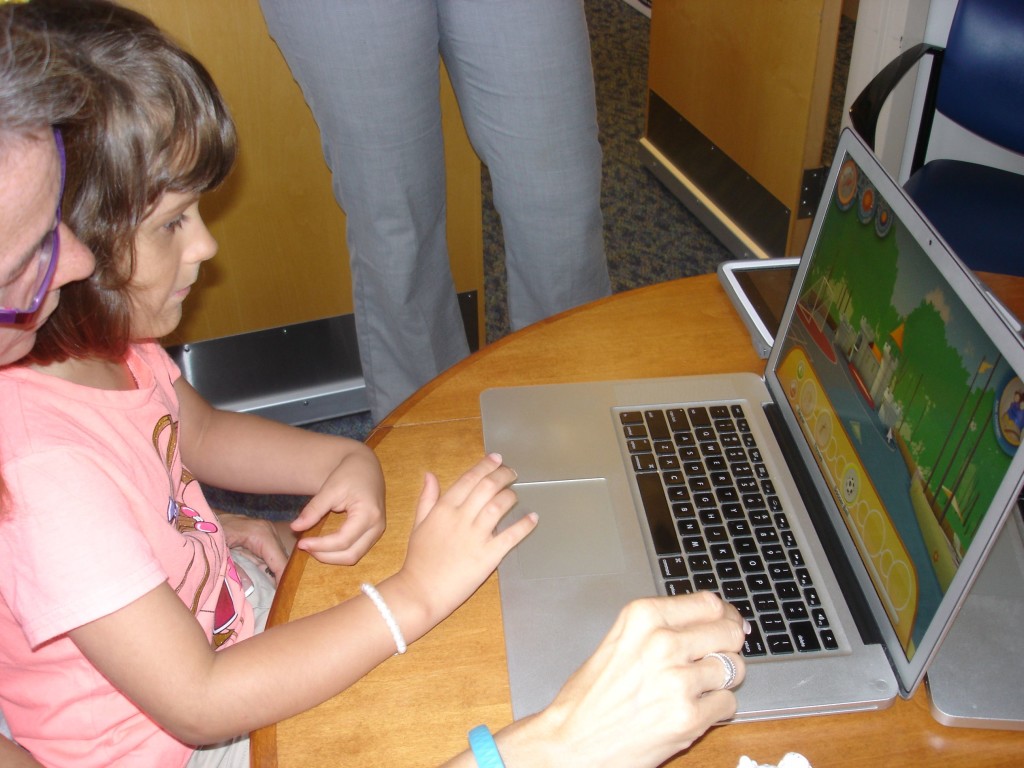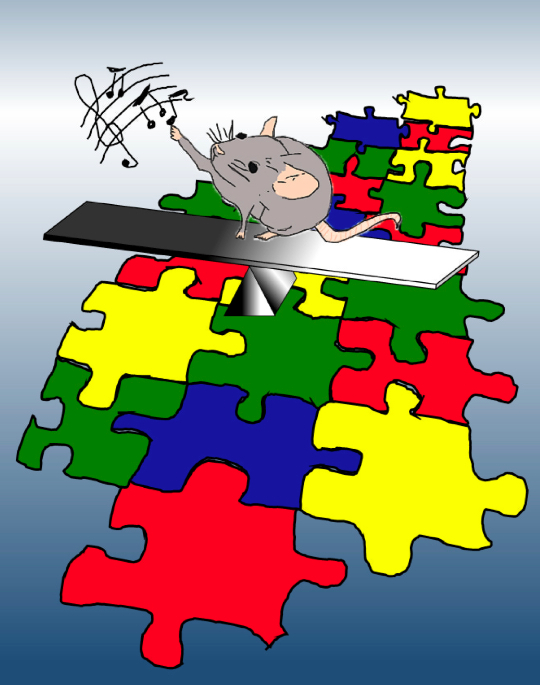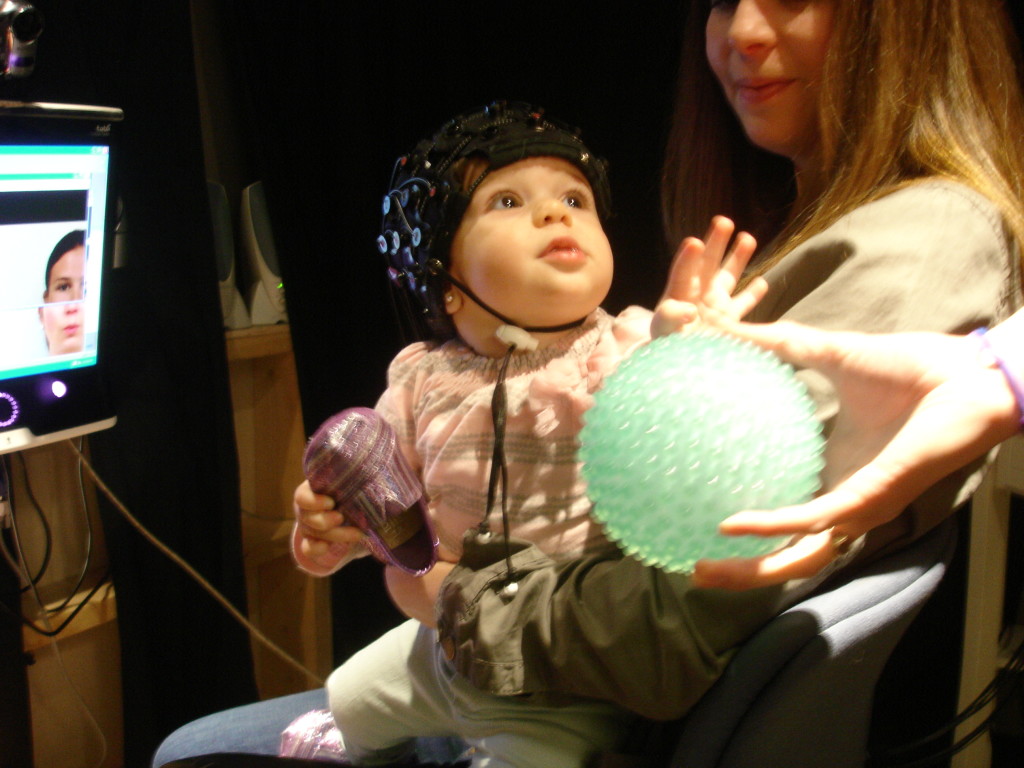
With initial help from her mother, Kailee West, 6, quickly masters the basics of Puddingstone Place, an interactive virtual environment that helps children with autism develop language skills.
In the 1990s, Facilitated Communication (FC), in which assistants “facilitate” the typing of thoughts by minimally verbal children by supporting their hands, began raising hopes in the autism community. The unproven procedure caught fire, and Syracuse University established a nationally recognized Facilitated Communication Institute.
Upon closer examination, though, doubts emerged. The messages were surprisingly sophisticated and written by children who often were not even looking at the keyboard. Critics charged that the words were actually those of the facilitator rather than the patient. Studies and organizations began discrediting FC. Full story »

A mouse study explores how sound and touch information come together in the autistic brain (Image courtesy Nadine Gogolla)
Families of children with autism spectrum disorder have long noted sensory processing difficulties such as heightened sensitivity to noise, touch or smell—or even specific foods or clothing textures—earning sensory processing a place in the
official DSM-5 description of the disorder.
“A high proportion of kids with autism spectrum disorder will have difficulty tolerating certain kinds of sensory inputs,” says Carolyn Bridgemohan, MD, co-director of the Autism Spectrum Center at Boston Children’s Hospital. Others, she adds, are less sensitive to certain stimuli, showing a higher tolerance for pain or excessively hot or cold temperatures.
A study published last week in Neuron uses mouse models to shed new light on the brain mechanisms that underlie sensory processing abnormalities in autism. Full story »
 Is 9-month-old Mila Goshgarian at risk for developing autism spectrum disorder (ASD)? Her 4-year-old twin brothers are both on the spectrum, so statistically her chances are at least 20 percent.
Is 9-month-old Mila Goshgarian at risk for developing autism spectrum disorder (ASD)? Her 4-year-old twin brothers are both on the spectrum, so statistically her chances are at least 20 percent.
Her mother, Tonia, brought her into Boston Children’s Hospital for the Infant Sibling Project, which works with babies who are at increased risk of developing ASD in hopes of discovering early brain biomarkers for the disorder. This is Mila’s fifth visit; she’s been coming to the Labs of Cognitive Neuroscience for testing since the age of 3 months. Full story »

Preliminary findings suggest that steroid treatment could improve language and behavior in children with regressive ASD.
In as many as a third of cases of autism spectrum disorder (ASD), children’s language and social skills develop normally at first. Then, between 1 and 2 ½ years of age, they begin to regress, losing words and retreating from interactions with parents—often abruptly. There has been some anecdotal evidence that steroid treatment can help these children, and a small retrospective study agrees—finding improved language and behavior and reversal of a characteristic abnormality in the language processing area of their brains.
Researchers led by Frank H. Duffy, MD, of the Epilepsy Center at Boston Children’s Hospital, looked back at 20 children 3 to 5 years old with documented regressive ASD who had received steroid therapy (prednisolone) under a neurologist’s supervision, generally starting several months after their regression was noted. For comparison, the team also reviewed data from 24 similar autistic children who did not receive steroids. Full story »

Did arbaclofen really fail in autism and fragile X?
Walter Kaufmann, MD, is co-director of the Fragile X Syndrome Program and a member of the department of Neurology at Boston Children’s Hospital. He was site principal investigator for three arbaclofen trials sponsored by Seaside Therapeutics and currently advises the company on data analyses. This post is second in a two-part series on clinical trials in autism spectrum disorders. (Read part 1)
The outcomes of drug trials in autism spectrum disorder (ASD) have, to date, been mixed. While atypical neuroleptic drugs have been effective for treating disruptive behavior in people with autism and are FDA-approved for that purpose, no available psychotropic drug has improved the core symptoms of ASD, such as social interaction deficits or stereotypic behaviors.
The heterogeneity—diversity—of ASD in both causes and symptoms may explain treatment failures to some extent. However, we have also lacked drugs targeting the brain mechanisms that underlie ASD. For this reason, targeted trials in fragile X syndrome, informed by neurobiology, have raised hopes of finally addressing core autistic symptoms.
Fragile X syndrome is a genetic disorder in which ASD occurs in 15 to 40 percent of cases. Initial results from a Phase 2 trial using the GABA-B agonist arbaclofen demonstrated relatively selective improvements in social avoidance in a wide age-range sample of subjects. Full story »
 This post is the first in a two-part series on clinical trials in autism spectrum disorders. Read part 2.
This post is the first in a two-part series on clinical trials in autism spectrum disorders. Read part 2.
In the world of neurodevelopmental disorders, an exciting trend is the emergence of specific molecular targets and treatments through genetic research. A case in point is IGF-1 therapy for Rett syndrome, a devastating disorder in girls that affects their ability to speak, walk, eat and breathe. It causes autism-like behaviors, intellectual disability and repetitive hand-wringing movements—a hallmark of the disorder.
A Phase I trial, published this week in the Proceedings of the National Academy of Sciences Early Edition, has modest but consistent results suggesting improvements in some salient features of the disorder.
Current treatments for Rett syndrome address only the symptoms and comorbidities, such as seizures, anxiety and scoliosis, but not the disease itself. But in 2007, findings in a mouse model (which even replicated the hand-wringing) changed how scientists think about Rett and other neurodevelopmental disorders, previously thought to be untreatable. Full story »












